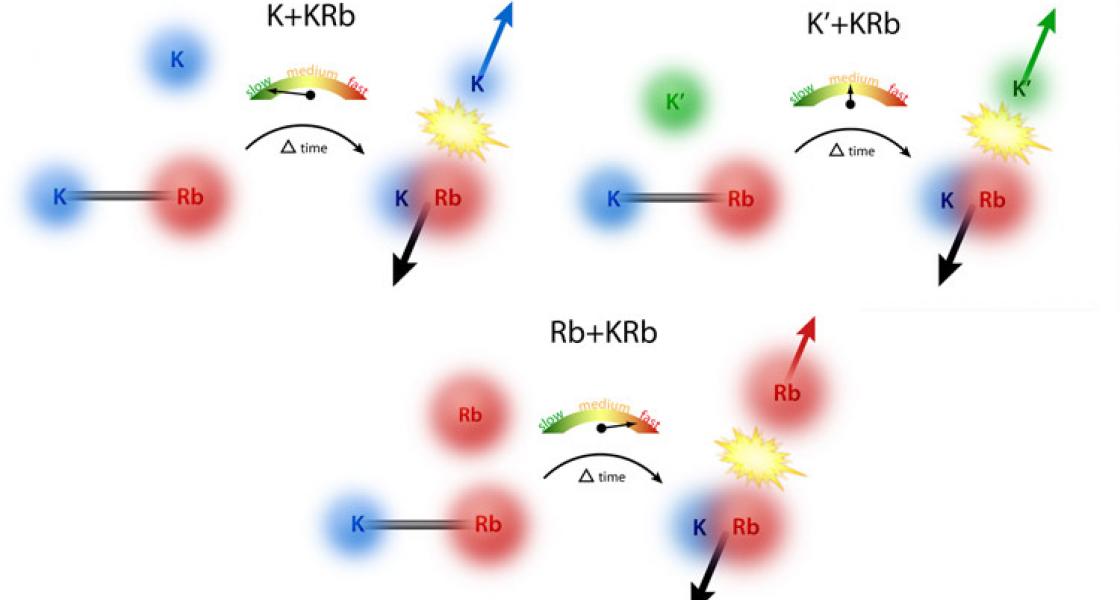When the Jin and Ye group collaboration wanted to investigate the creation of stable ultracold polar molecules, the researchers initially decided to make ultracold KRb (potassium-rubidium) molecules and then study their collision behavior. Making the molecules required a cloud of incredibly cold K and Rb atoms, the ability to apply a magnetic field of just the right strength to induce a powerful attraction between the different kinds of atoms, and some low-frequency photons. The researchers carried out their molecular manufacturing at .00000015 degrees above absolute zero. The process linked 87Rb atoms, which are bosons that happily occupy the same quantum state at ultracold temperatures, to 40K atoms, which are fermions that resist occupying the same quantum state as their neighbors. The loosely bound KRb products were also fermions.
The KRb molecules were manufactured by graduate students Josh Zirbel and Kang-Kuen Ni, research associate Silke Ospelkaus, and Fellows Carl Wieman, Jun Ye, and Deborah Jin. Once they had the molecules, the experimentalists investigated collisions between them and each of the atoms that had produced them. Their goals were both to understand the new system and to prepare for future experiments to drive the KRb molecules into more stable molecular states. Zirbel and his colleagues worked with research associate and theorist José D’Incao, who analyzed the fundamental physics responsible for the observed collision behavior. Zirbel and his colleagues observed three different types of collisions that D’Incao explained in terms of the physics governing atom-molecule interactions.
The experimentalists were able to monitor collisions in an optical trap by observing how fast molecules were lost from the trap. Molecules exited the trap because they gained energy when an atom crashed into them. Rb atoms collided with KRb molecules the most effectively, causing a rapid loss of a large fraction of molecules from the trap. D’Incao’s calculations explained this behavior by showing that the bosonic Rb atoms are attracted to the KRb molecules, enhancing the collision rate.
In contrast, KRb collisions with K atoms with the same spin as the K in the molecules occurred significantly less often. Fewer molecules flew out of the trap. In fact, most of the molecules in this experiment stayed in the trap for 100 milliseconds, the longest life observed so far for this type of ultracold molecule. D’Incao’s analysis explained this collision behavior by showing that a strong repulsion between the fermionic K atoms and the KRb molecules reduced the likelihood of atom-molecule collisions.
A third collision experiment yielded an interesting and counterintuitive result. In this experiment, Zirbel’s team studied collisions between KRb molecules and K atoms with a different spin than the K atoms in the molecules. The molecules in this experiment left the trap faster than those encountering K atoms with identical spins, but slower than those encountering Rb atoms. In this case, D’Incao’s analysis showed that consideration of only the interactions between fermions or bosons couldn’t account for the observed behavior. Rather, Efimov physics, which describe quantum mechanical effects that occur in three-particle systems, were responsible for the intermediate repulsion seen experimentally. These results proved that stable molecules can be created in the absence of the unsociable fermionic interactions that, until now, were thought to be necessary for producing long-lived ultracold molecules. - Julie Phillips




